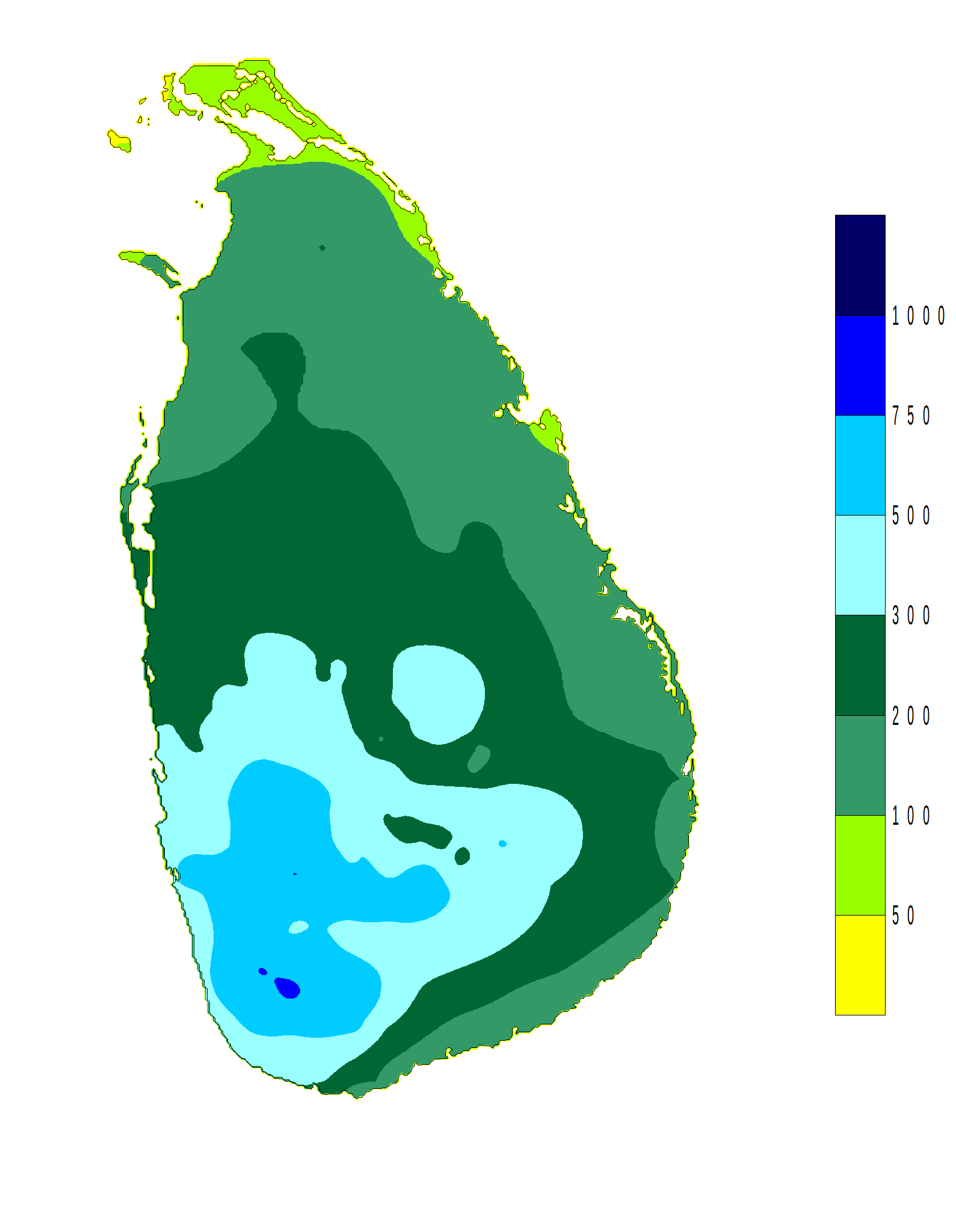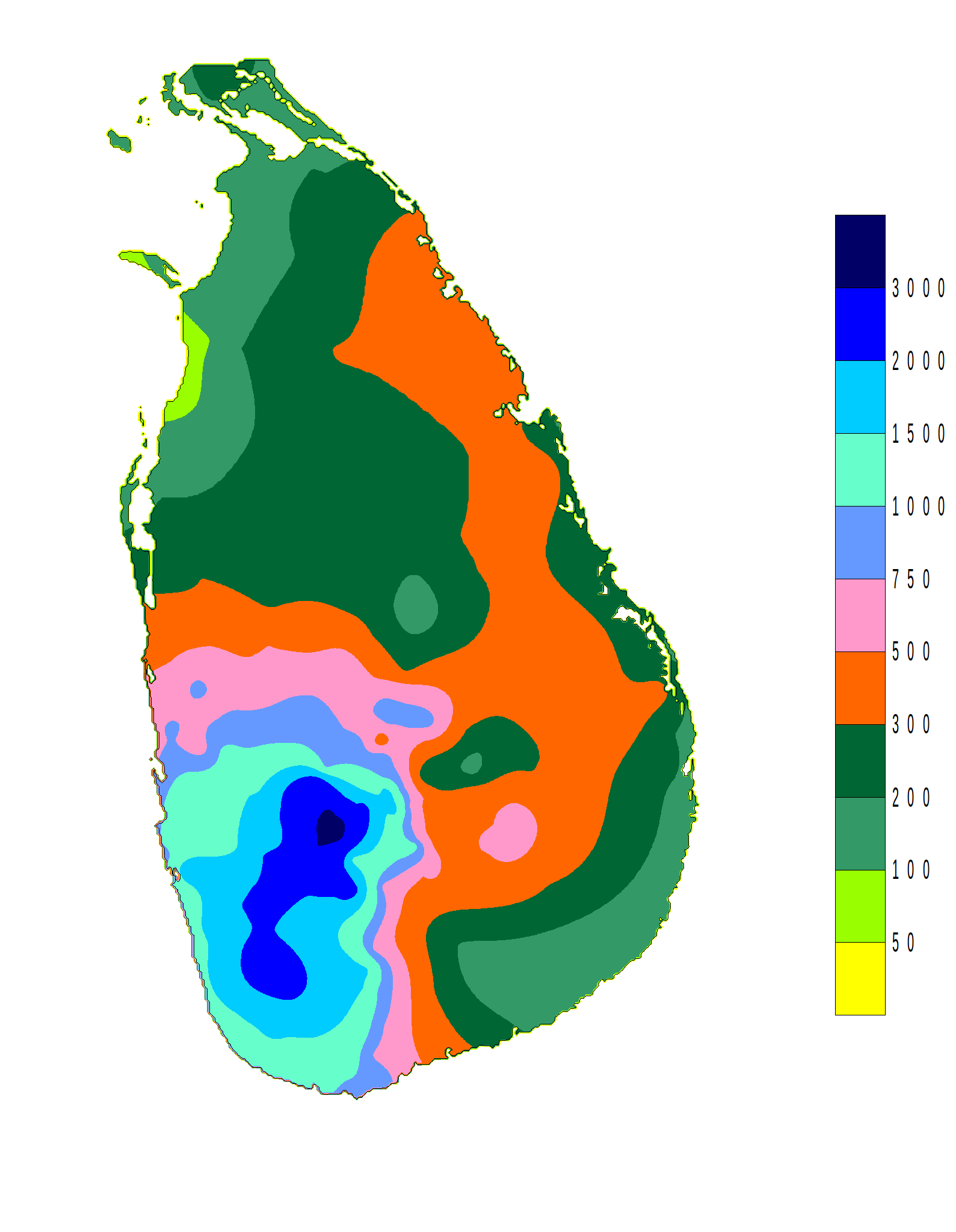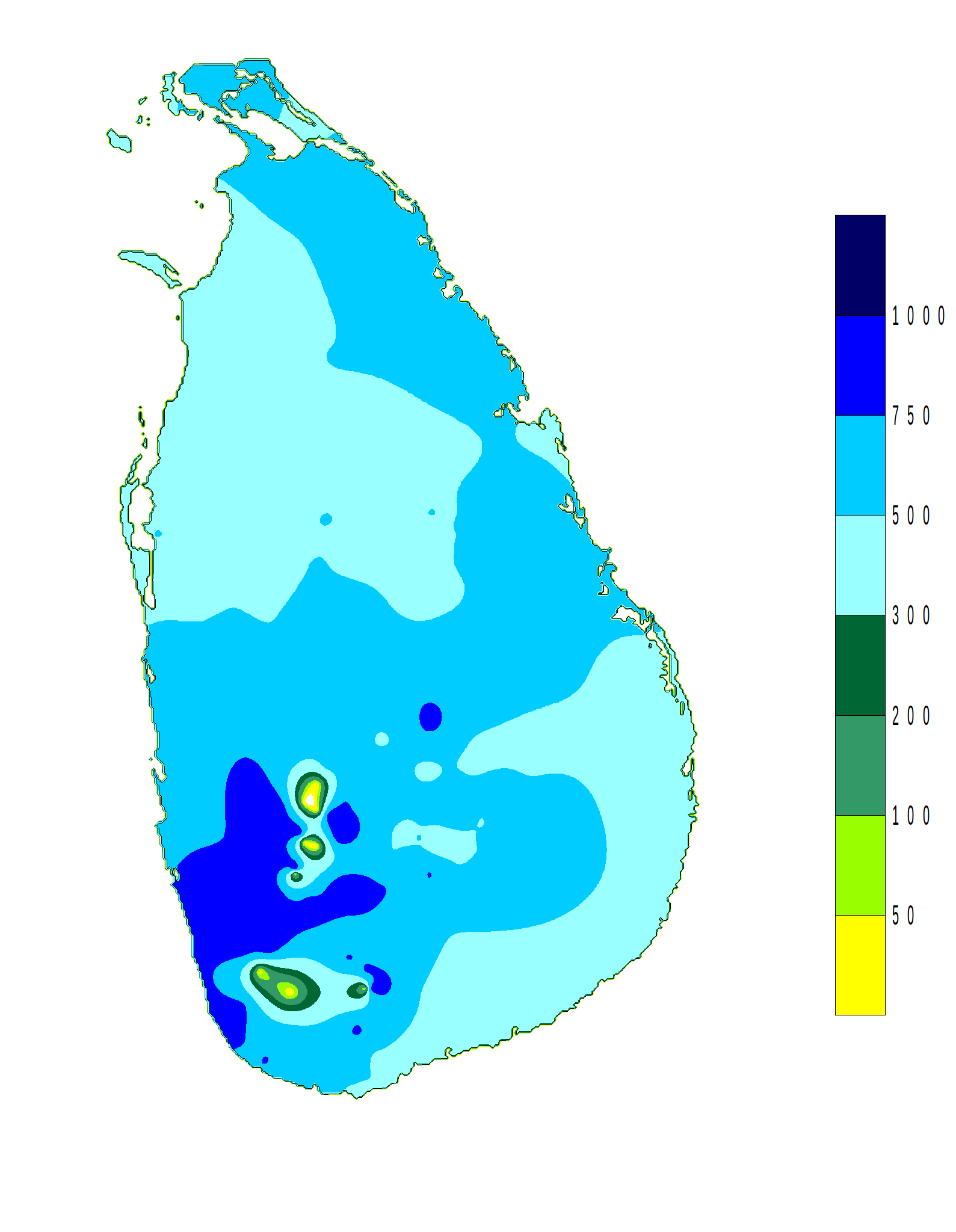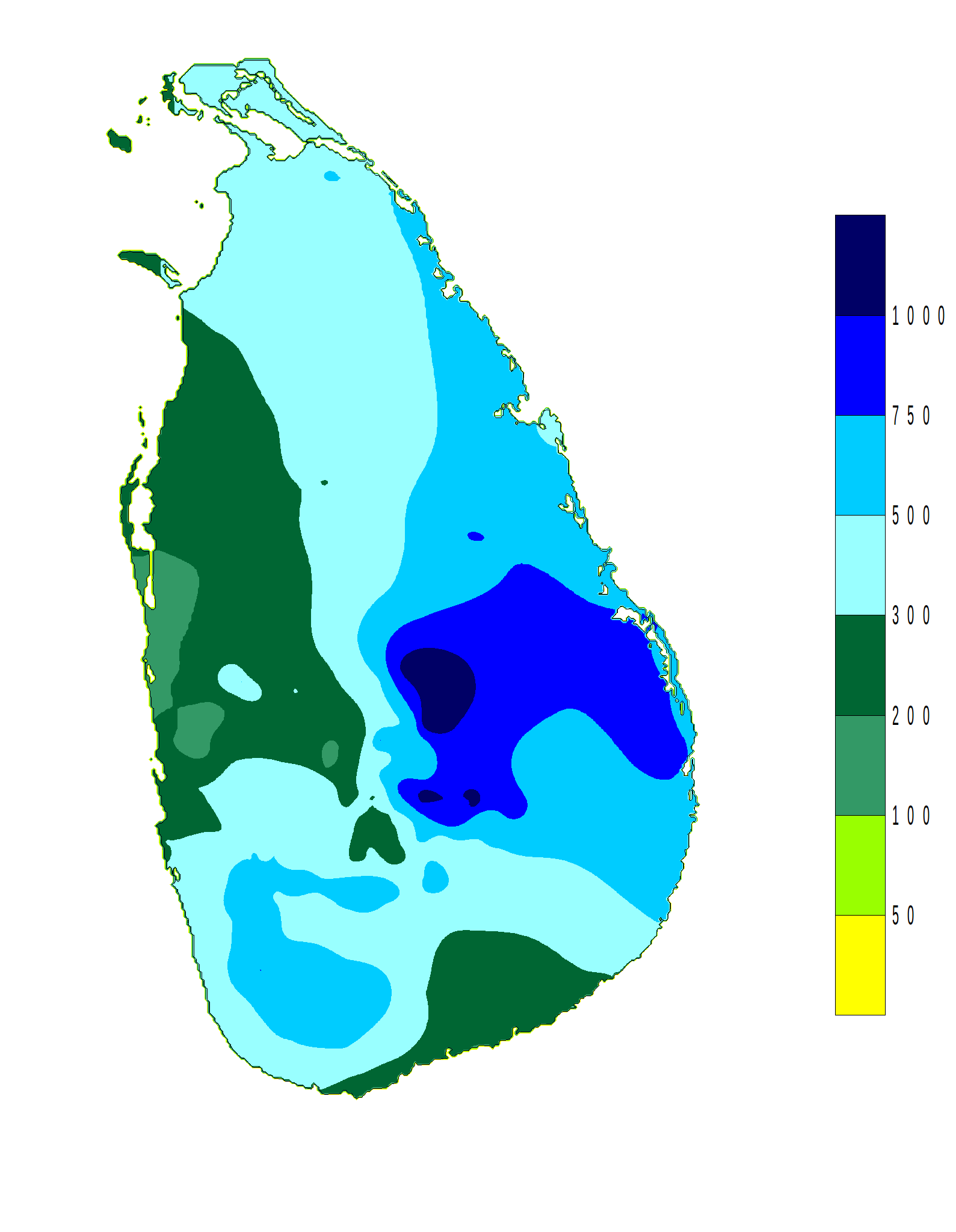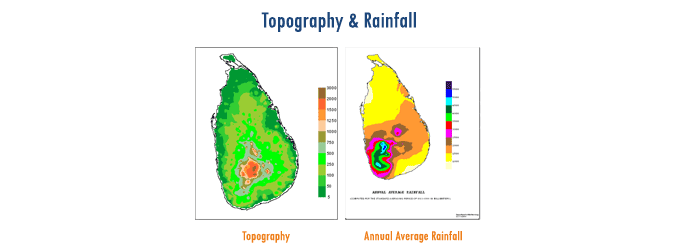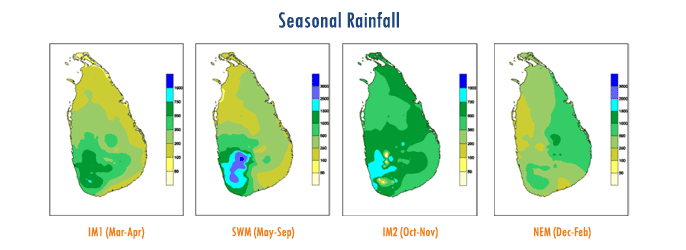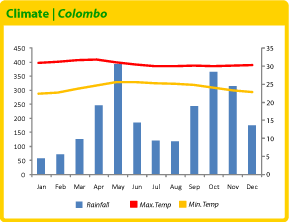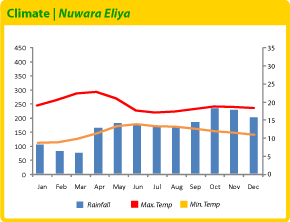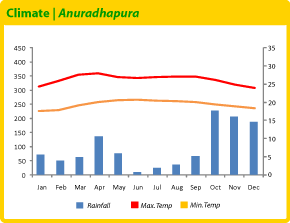Maybe you mean: 'about' or 'homeslider' or 'climate' or 'footerslider' or 'forecast'
Climate
Climate is defined as the condition of the atmosphere at a particular location over a long period of time (from one month to many millions of years, but generally 30 years). Climate is the sum of atmospheric elements (and their variations), solar radiation, temperature, humidity, clouds and precipitation (type, frequency, and amount), atmospheric pressure, and wind (speed and direction).
Due to the location of Sri Lanka, within the tropics between 5° 55' to 9° 51' North latitude and between 79° 42' to 81° 53' East longitude, the climate of the island could be characterized as tropical.
Topography
The central part of the southern half of the island is mountainous with heights more then 2.5 Km. The core regions of the central highlands contain many complex topographical features such as ridges, peaks, plateaus, basins, valleys and escarpments. The remainder of the island is practically flat except for several small hills that rise abruptly in the lowlands. These topographical features strongly affect the spatial patterns of winds, seasonal rainfall, temperature, relative humidity and other climatic elements, particularly during the monsoon season.
Rainfall
Rainfall in Sri Lanka has multiple origins. Monsoonal, Convectional and depressional rain accounts for a major share of the annual rainfall. The mean annual rainfall varies from under 900mm in the driest parts (southeastern and northwestern) to over 5000mm in the wettest parts (western slopes of the central highlands). (Fig. 1).
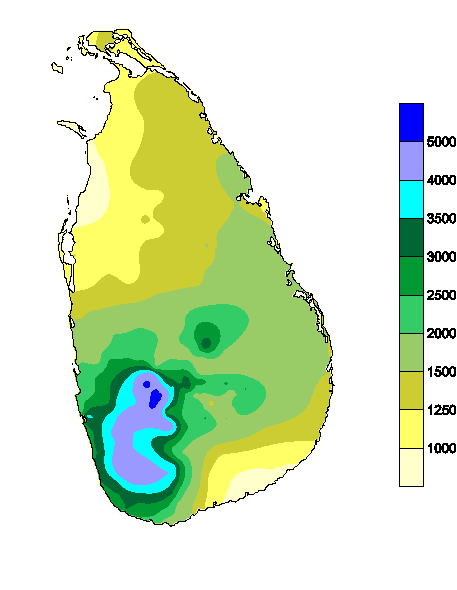
Fig. 1 Annual Rainfall in Sri Lanka
Temperature
Regional differences observed in air temperature over sri lanka are mainly due to altitude, rather than to latitude. The mean monthly temperatures differs slightly depending on the seasonal movement of the sun, with some modified influence caused by rainfall. The mean annual temperature in Sri Lanka manifests largely homogeneous temperatures in the low lands and rapidly decreasing temperatures in the highlands. In the lowlands, up to and altitude of 100 m to 150 m, the mean annual temperature various between 26.5 °C to 28.5 °C, with an annual temperature of 27.5 °C. In the highlands, the temperature falls quickly as the altitude increases. The mean annual temperature of Nuwaraeliya, at 1800 m sea level, is 15.9 °C. The coldest month with respect to mean monthly temperature is generally January, and the warmest months are April and August.
The mean annual temperature varies from 27°C in the coastal lowlands to 16°C at NuwaraEliya, in the central highlands (1900m above mean sea level). This relatively unique feature manifesting as sunny beaches to rain forests inland is a tourist attraction.
Annual Max Temperature Annual Min Temperature Annual Mean Temperature
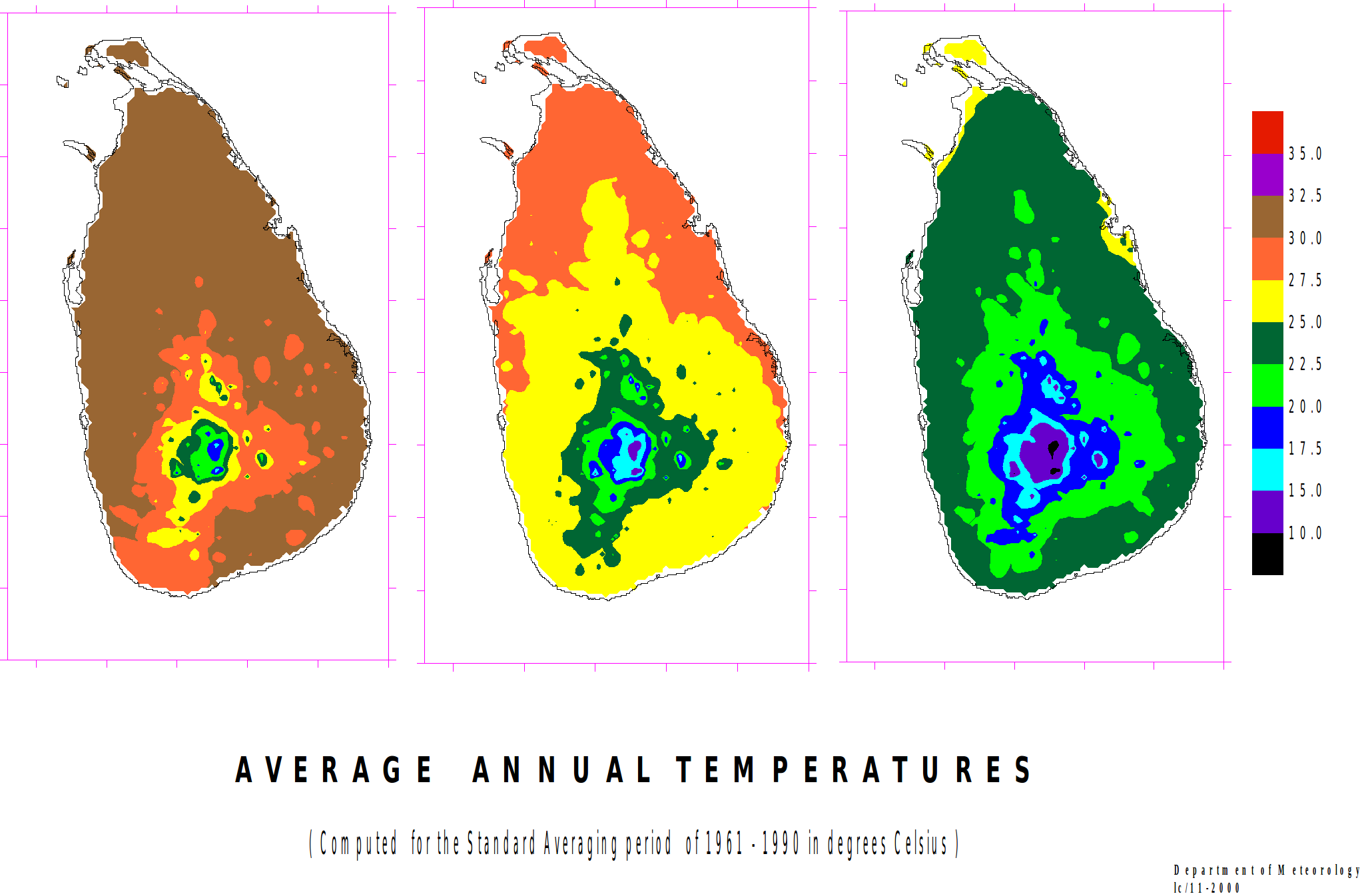
Climate Seasons
The Climate of Sri Lanka is dominated by the above mentioned topographical features of the country and the Southwest and Northeast monsoons regional scale wind regimes. The Climate experienced during 12 months period in Sri Lanka can be characterized in to 4 climate seasons as follows.
Centre for Climate Change Studies
The Centre for Climate Change Studies was established as a part of the Department of Meteorology by the Cabinet Memorandum dated 11th June 1999 to address issues related to Climate Change.
|
|
 |
The major functions of the Centre are,
Research into Climate Change
Monitoring of Climate Change
Creating Awareness on Climate Change Related Issues
Information gathering and dissemination
Execution of Models of Climate Change
Documentation services
Establishing links with relevant International Agencies
Assisting in consultations on Climate Change.
At present the Centre is housed at the Head Quarters of the Department of Meteorology and is guided in its activities by a Technical Advisory Committee consisting of senior scientists drawn from various disciplines.
Further Informations
Centre for climate Change Studies, Department of Meteorology,
383, Bauddhaloka Mawatha,
Colombo 07, Sri Lanka.
Telephone : +94 11 2676259
Fax : +94 11 2676259






